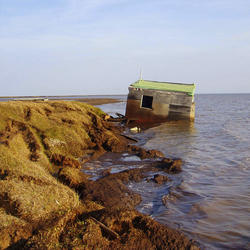Surface Water Capabilities Highlights
As a Federal agency, the USGS provides water information that is fundamental to national and local economic well-being, protection of life and property, and effective management of the Nation’s water resources. Below, find data and tools relevant to a wide range of water resources and conditions including streamflow, groundwater, water quality, and water use and availability.
The USGS partners with many cooperators to build an infrastructure of state-of-the-art data collection, data processing, and data management tools providing an invaluable resources for analyses, mapping, modeling, and research. Below are a few of the tools that keeps cooperators coming back to parter with us.
NWIS WEB
The USGS's National Water Information System (NWIS) is a comprehensive and distributed application that supports the acquisition, processing, and long-term storage of water data. Water Data for the Nation serves as the publicly available portal to a geographically seamless set of much of the water data maintained within NWIS. For Maryland, Delaware, and the District of Columbia, the online National Water Informations System (NWIS WEB) serves...
Real-Time Data: 224 sites in Maryland, 58 in Delaware, and 13 in the District of Columbia
Historical Observations: 306 sites in Maryland, 86 in Delaware, and 14 in the District of Columbia
Daily Data: 391 sites in Maryland, 95 in Delaware, and 17 in the District of Columbia
Statistics (Daily/Monthly/Annual): 354 sites in Maryland, 75 in Delaware, and 11 in the District of Columbia
Peak-Flow Data: 279 sites in Maryland, 68 in Delaware, and 4 in the District of Columbia
Field Measurements: 608 sites in Maryland, 100 in Delaware, and 8 in the District of Columbia
Mobile Water Data
The new USGS Mobile Water Data site (m.waterdata.usgs.gov) is a site designed for mobile users. It highlights USGS current conditions water data. For example, you can use it to monitor conditions at a favorite river or stream. Any USGS current conditions water data is available. Simply use any browser to go to m.waterdata.usgs.gov. While the site was designed for smartphones, it may work fine on tablet computers, most other mobile devices and desktop computers.
StreamStats
StreamStats provides access to spatial analytical tools that are useful for water-resources planning and management, and for engineering and design purposes. The map-based user interface can be used to delineate drainage areas, get basin characteristics and estimates of flow statistics, and more. Available information varies from state to state. StreamStats works within Web browser software on personal computers and mobile devices, and is best viewed using the latest versions of Internet Explorer, Microsoft Edge, Chrome, Opera or Firefox.
Flood Innundation Mapper
USGS Flood Inundation Maps, along with Internet information regarding current stage from the USGS streamgage, provide emergency management personnel and residents with information that is critical for flood-response activities, such as evacuations and road closures, as well as for post-flood recovery efforts. The Flood Innundation Mapper is a Web application that allows users to explore the full set of inundation maps that shows where flooding would occur given a selected stream condition. Users can also access historical flood information and potential loss estimates based on the severity of the flood. The Flood Innundation Mapper works within Web browser software on personal computers and mobile devices, and is best viewed using the latest versions of Internet Explorer, Microsoft Edge, Chrome, Opera or Firefox.
PeakFQ
Program PeakFQ implements the Bulletin 17C procedures for flood-frequency analysis of streamflow records, providing estimates of flood magnitudes and their corresponding variance for a range of annual exceedance probabilities. The output also includes estimates of the parameters of the log-Pearson Type III frequency distribution, including the logarithmic mean, standard deviation, skew, and mean square error of the skew. The output graph includes the fitted frequency curve, systematic peaks, low outliers, censored peaks, interval peaks, historic peaks, thresholds, and confidence limits.
PeakFQ reads annual peaks in the standard peakfq (WATSTORE) text format available from NWISWeb at https://nwis.waterdata.usgs.gov/usa/nwis/peak




















